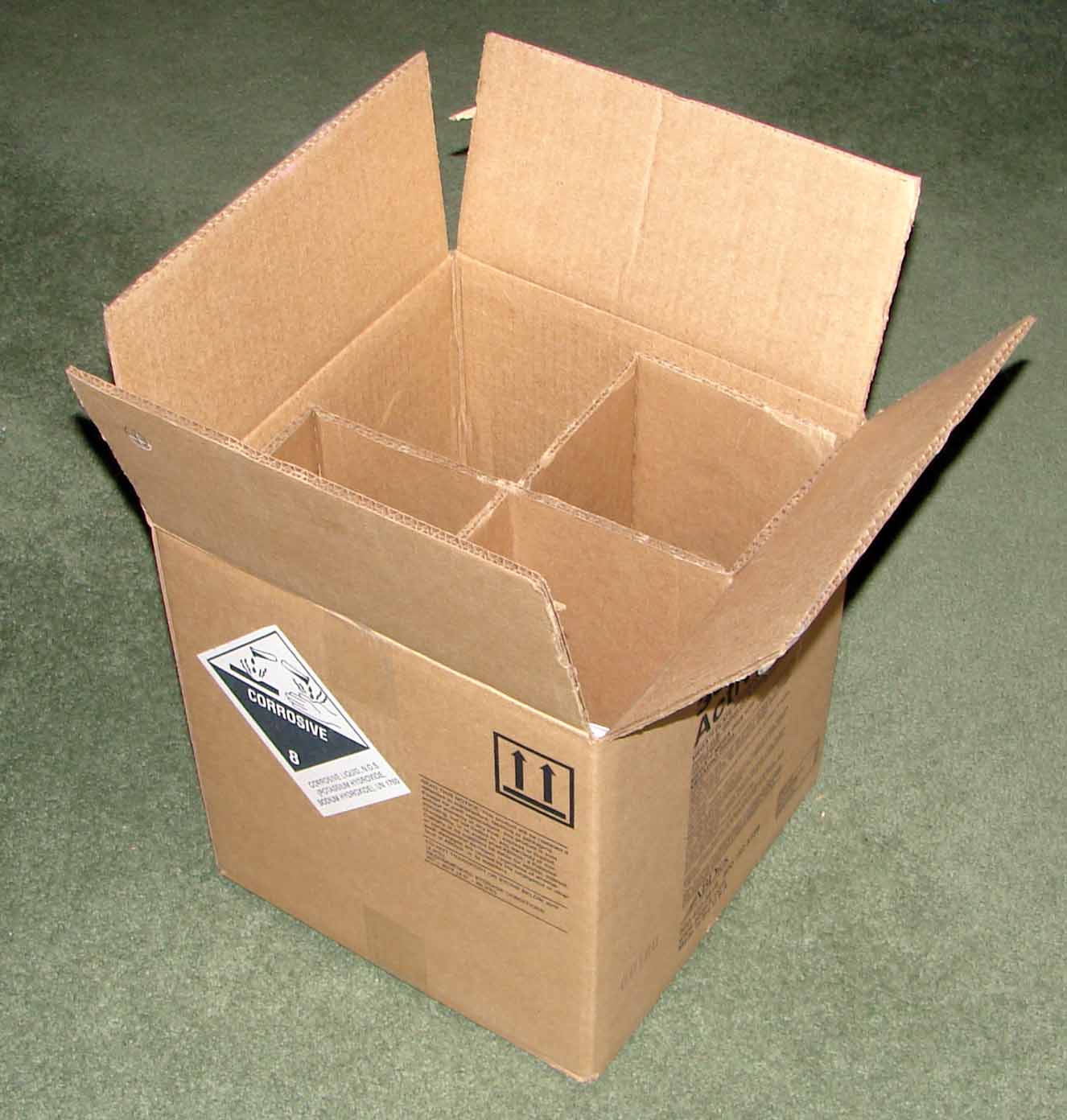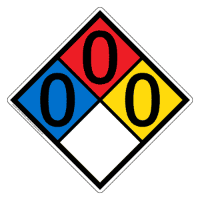|
UN Recommendations On The Transport Of Dangerous Goods
The ''UN Recommendations on the Transport of Dangerous Goods'' are contained in thprepared by the Subcommittee of Experts on the Transport of Dangerous Goods of the United Nations Economic and Social Council (ECOSOC). They cover the transport of dangerous goods by all modes of transport except by bulk tanker. They are not obligatory or legally binding on individual countries, but have gained a wide degree of international acceptance: they form the basis of several international agreements and many national laws. "Dangerous goods" (also known as "hazardous materials" or "HAZMAT" in the United States) may be a pure chemical substance (for example, trinitrotoluene (TNT), nitroglycerin), mixtures (for example, dynamite, gunpowder) or manufactured articles (for example, ammunition, fireworks). The transport hazards that they pose are grouped into nine classes, which may be subdivided into divisions and/or packing groups. The most common dangerous goods are assigned a UN number, a fou ... [...More Info...] [...Related Items...] OR: [Wikipedia] [Google] [Baidu] |
United Nations Economic And Social Council
The United Nations Economic and Social Council (ECOSOC; french: links=no, Conseil économique et social des Nations unies, ) is one of the six principal organs of the United Nations, responsible for coordinating the economic and social fields of the organization, specifically in regards to the fifteen specialised agencies, the eight functional commissions, and the five regional commissions under its jurisdiction. ECOSOC serves as the central forum for discussing international economic and social issues, and formulating policy recommendations addressed to member states and the United Nations System. It has 54 members. In addition to a rotating membership of 54 UN member states, over 1,600 nongovernmental organizations have consultative status with the Council to participate in the work of the United Nations. ECOSOC holds one four-week session each year in July, and since 1998 has also held an annual meeting in April with finance ministers of heading key committees of the Worl ... [...More Info...] [...Related Items...] OR: [Wikipedia] [Google] [Baidu] |
Package Testing
Package testing or packaging testing involves the measurement of a characteristic or property involved with packaging. This includes packaging materials, packaging components, primary packages, shipping containers, and unit loads, as well as the associated processes. Testing measures the effects and interactions of the levels of packaging, the package contents, external forces, and end-use. It can involve controlled laboratory experiments, subjective evaluations by people, or field testing. Documentation is important: formal test method, test report, photographs, video, etc. Testing can be a qualitative property, qualitative or Quantitative property, quantitative procedure. Package testing is often a physical test. With some types of packaging such as food and pharmaceuticals, chemical tests are conducted to determine suitability of food contact materials. Testing programs range from simple tests with little replication (statistics), replication to more thorough experimenta ... [...More Info...] [...Related Items...] OR: [Wikipedia] [Google] [Baidu] |
Hazardous Materials
Dangerous goods, abbreviated DG, are substances that when transported are a risk to health, safety, property or the environment. Certain dangerous goods that pose risks even when not being transported are known as hazardous materials ( syllabically abbreviated as HAZMAT or hazmat). An example for dangerous goods is hazardous waste which is waste that has substantial or potential threats to public health or the environment. Hazardous materials are often subject to chemical regulations. Hazmat teams are personnel specially trained to handle dangerous goods, which include materials that are radioactive, flammable, explosive, corrosive, oxidizing, asphyxiating, biohazardous, toxic, pathogenic, or allergenic. Also included are physical conditions such as compressed gases and liquids or hot materials, including all goods containing such materials or chemicals, or may have other characteristics that render them hazardous in specific circumstances. Dangerous goods are often indicated ... [...More Info...] [...Related Items...] OR: [Wikipedia] [Google] [Baidu] |
Safety Codes
S-phrases are defined in Annex IV of European Union Directive 67/548/EEC: ''Safety advice concerning dangerous substances and preparations''. The list was consolidated and republished iDirective 2001/59/EC where translations into other EU languages may be found. The list was subsequently updated and republished iDirective 2006/102/EC where translations to additional European languages were added. These safety phrases are used internationally and not just in Europe, and there is an ongoing effort towards complete international harmonization. ''(Note: missing S-number combinations indicate phrases that were deleted or replaced by another phrase.)'' Safety phrases See also * List of R-phrases * GHS precautionary statements * GHS hazard statements * Material safety data sheet * Risk and Safety Statements {{short description, System of hazard codes and phrases for labeling dangerous chemicals and compounds Risk and Safety Statements, also known as R/S statements, R/S numbers, R ... [...More Info...] [...Related Items...] OR: [Wikipedia] [Google] [Baidu] |
Chemical Safety
Chemicals as elements, compounds, mixtures, solutions and emulsions are very widely used and transported in the modern industrial society. Of necessity, they are also used in schools, universities and other training facilities to educate pupils in their safe use and handling and also are commonly used in domestic situations for cleaning, gardening and DIY. However, there are chemicals that should not mix or get in contact with others, as they can produce byproducts that may be toxic, carcinogenic, explosive etc, or can be dangerous themselves. To avoid disasters and mishaps, maintaining safety is considered paramount, especially by chemists. Chemical safety includes all those policies, procedures and practices designed to minimise the risk of exposure to potentially hazardous chemicals. This includes the risks of exposure to persons handling the chemicals, to the surrounding environment, and to the communities and ecosystems within that environment. The hazardous nature of many ch ... [...More Info...] [...Related Items...] OR: [Wikipedia] [Google] [Baidu] |
United Nations Economic Commission For Europe
The United Nations Economic Commission for Europe (ECE or UNECE) is one of the five regional commissions under the jurisdiction of the United Nations Economic and Social Council. It was established in order to promote economic cooperation and integration among its member states. The commission is composed of 56 member states, most of which are based in Europe, as well as a few outside of Europe. Its transcontinental Eurasian or non-European member states include: Armenia, Azerbaijan, Canada, Cyprus, Georgia, Israel, Kazakhstan, Kyrgyzstan, the Russian Federation, Tajikistan, Turkey, Turkmenistan, the United States of America and Uzbekistan. History The commission was established by the Economic and Social Council on 28 March 1947 in order to "Initiate and participate in measures for facilitating concerted action for the economic reconstruction of Europe," as well as to "maintain and strengthen the economic relations of the European countries, both among themselves and with o ... [...More Info...] [...Related Items...] OR: [Wikipedia] [Google] [Baidu] |
International Convention For The Safety Of Life At Sea
The International Convention for the Safety of Life at Sea (SOLAS) is an international maritime treaty that sets minimum safety standards in the construction, equipment and operation of merchant ships. The International Maritime Organization convention requires signatory flag states to ensure that ships flagged by them comply with at least these standards. The current version of SOLAS is the 1974 version, known as SOLAS 1974, which came into force on 25 May 1980. , SOLAS 1974 has 167 contracting states, which flag about 99% of merchant ships around the world in terms of gross tonnage. SOLAS in its successive forms is generally regarded as the most important of all international treaties concerning the safety of merchant ships. Signatories The non-parties to SOLAS 1974 include numerous landlocked countries (for obvious reasons), as well as El Salvador, Micronesia and East Timor. Some others including Bolivia, Lebanon and Sri Lanka, all considered flag of convenience states, a ... [...More Info...] [...Related Items...] OR: [Wikipedia] [Google] [Baidu] |
Convention Concerning International Carriage By Rail
Convention may refer to: * Convention (norm), a custom or tradition, a standard of presentation or conduct ** Treaty, an agreement in international law * Convention (meeting), meeting of a (usually large) group of individuals and/or companies in a certain field who share a common interest ** Fan convention, a gathering of fans of a particular media property or genre ** Gaming convention, centered on role-playing games, collectible card games, miniatures wargames, board games, video games, and the like ** Political convention, a formal gathering of people for political purposes * Trade fair * Bridge convention, a term in the game of bridge * Convention (Paris Métro), a station on line 12 of the Paris Métro in the 15th arrondissement * "The Convention" (''The Office'' episode) * "Convention" (''Malcolm in the Middle'' episode) See also * Conference * National Convention (other) The National Convention was the first republican legislative body of the French Revolu ... [...More Info...] [...Related Items...] OR: [Wikipedia] [Google] [Baidu] |
Globally Harmonized System Of Classification And Labelling Of Chemicals
The Globally Harmonized System of Classification and Labelling of Chemicals (GHS) is an internationally agreed-upon standard managed by the United Nations that was set up to replace the assortment of hazardous material classification and labelling schemes previously used around the world. Core elements of the GHS include standardized hazard testing criteria, universal warning pictograms, and harmonized safety data sheets which provide users of dangerous goods with a host of information. The system acts as a complement to the UN Numbered system of regulated hazardous material transport. Implementation is managed through the UN Secretariat. Although adoption has taken time, as of 2017, the system has been enacted to significant extents in most major countries of the world. This includes the European Union, which has implemented the United Nations' GHS into EU law as the CLP Regulation, and United States Occupational Safety and Health Administration standards. History Before the Gl ... [...More Info...] [...Related Items...] OR: [Wikipedia] [Google] [Baidu] |
United States Department Of Transportation
The United States Department of Transportation (USDOT or DOT) is one of the executive departments of the U.S. federal government. It is headed by the secretary of transportation, who reports directly to the President of the United States and is a member of the president's Cabinet. The department's mission is "to develop and coordinate policies that will provide an efficient and economical national transportation system, with due regard for need, the environment, and the national defense." History Prior to the creation of the Department of Transportation, its functions were administered by the under secretary of commerce for transportation. In 1965, Najeeb Halaby, administrator of the Federal Aviation Agency (predecessor to the Federal Aviation Administration, FAA), suggested to President Lyndon B. Johnson that transportation be elevated to a cabinet-level post, and that the FAA be folded into the DOT. It was established by Congress in the Department of Transportation Act ... [...More Info...] [...Related Items...] OR: [Wikipedia] [Google] [Baidu] |
Transport Canada
Transport Canada (french: Transports Canada) is the department within the Government of Canada responsible for developing regulations, policies and services of road, rail, marine and air transportation in Canada. It is part of the Transportation, Infrastructure and Communities (TIC) portfolio. The current Minister of Transport is Omar Alghabra. Transport Canada is headquartered in Ottawa, Ontario. History The Department of Transport was created in 1935 by the government of William Lyon Mackenzie King in recognition of the changing transportation environment in Canada at the time. It merged three departments: the former Department of Railways and Canals, the Department of Marine, and the Civil Aviation Branch of the Department of National Defence (c. 1927 when it replaced the Air Board) under C. D. Howe, who would use the portfolio to rationalize the governance and provision of all forms of transportation (air, water and land). He created a National Harbours Board and Trans-C ... [...More Info...] [...Related Items...] OR: [Wikipedia] [Google] [Baidu] |
Corrugated Box - Haz Mat
The term corrugated, describing a series of parallel ridges and furrows, may refer to the following: Materials *Corrugated fiberboard, also called corrugated cardboard *Corrugated galvanised iron, a building material composed of sheets of cold-rolled hot-dip galvanised mild steel *Corrugated plastic, a wide range of extruded twinwall plastic-sheet products produced from high-impact polypropylene resin *Corrugated stainless steel tubing, tubing made of stainless steel with corrugation on the inside or outside Animals *Corrugated darter, a species of fish endemic to the eastern United States *Corrugated pipefish, a marine fish of the family Syngnathidae *Corrugated frog, a species of frog in the family Dicroglossidae *Corrugated water frog, a species of frog in the family Nyctibatrachidae *Corrugated nutmeg, a species of sea snail Other uses * Corrugaphone or whirly tube, an experimental musical instrument or toy * Corrugated road, a form of damage prone to develop in the surface ... [...More Info...] [...Related Items...] OR: [Wikipedia] [Google] [Baidu] |




